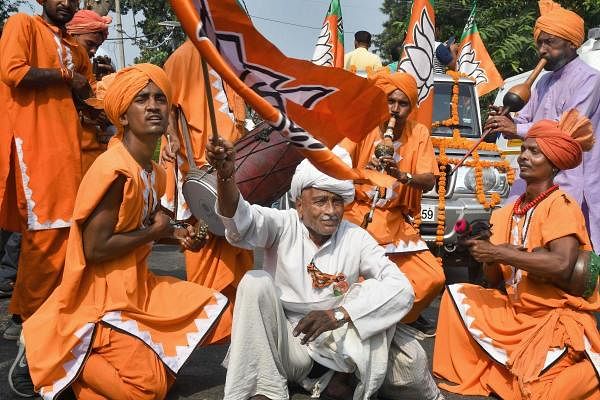
The poll outcome in Haryana delivered an unexpected hung Assembly, with the incumbent BJP falling short of numbers to form the government even as it emerged as the single largest party, winning 40 seats.
The Congress announced a resounding comeback in the state, while doubling its tally with 30 seats.
But the showstopper was the new kid on the block, the fledgling Jananayak Janata Party (JJP) that emerged as a kingmaker of sorts by winning a crucial 10 seats in its maiden Assembly election.
Now, the JJP and independents would hold the key to government formation.
Also read — All about Haryana's kingmaker Dushyant Chautala
The BJP win brings along a huge setback just months after it had a clean sweep winning all 10 Lok Sabha seats. The poll outcome has left the BJP visibly embarrassed, even as it may possibly emerge triumphant to form the government one way or the other.
The saffron party, which went to town with ‘Mission 75’, has lost 7 seats since the last polls. Barring two, Manohar Lal Khattar’s entire cabinet was wiped out, with all top ministers losing.
A humiliated BJP state president resigned after losing his seat. BJP’s experiment fielding two Muslim candidates flopped. The saffron party’s attempt to add some bling by fielding celebrities failed as well, with wrestlers Yogeshwar Dutt, Babita Phogat and Tiktok sensation Sonali Phogat all losing.
Chief Minister Manohar Lal Khattar won his seat from Karnal, while Bhupinder Singh Hooda retained his traditional seat of Gahri Sampla Kiloi in Rohtak. INLD, which won 19 seats in 2014, was reduced to one seat won by Abhay Chautala.
The mandate shows how local issues dominated the polls, even as they were overshadowed by the BJP’s blitzkrieg after the abrogation of Article 370.
This election was a manifestation of dominant Jat community’s dissatisfaction with the BJP, which positioned itself as a party with a non-Jat lineage.
The saffron party’s consolidation of the non-Jat votes led to the polarization of the Jat electorate, which worked to the advantage of the Congress and the JJP. A majority of the Jat faces projected by the BJP in the election lost.
The Jat-Dalit combination worked well for the Congress, as the INLD’s Jat votes were split between the Congress and the JJP. Somewhere, the Congress populist manifesto, also worked to party’s advantage, impacting the voting pattern.